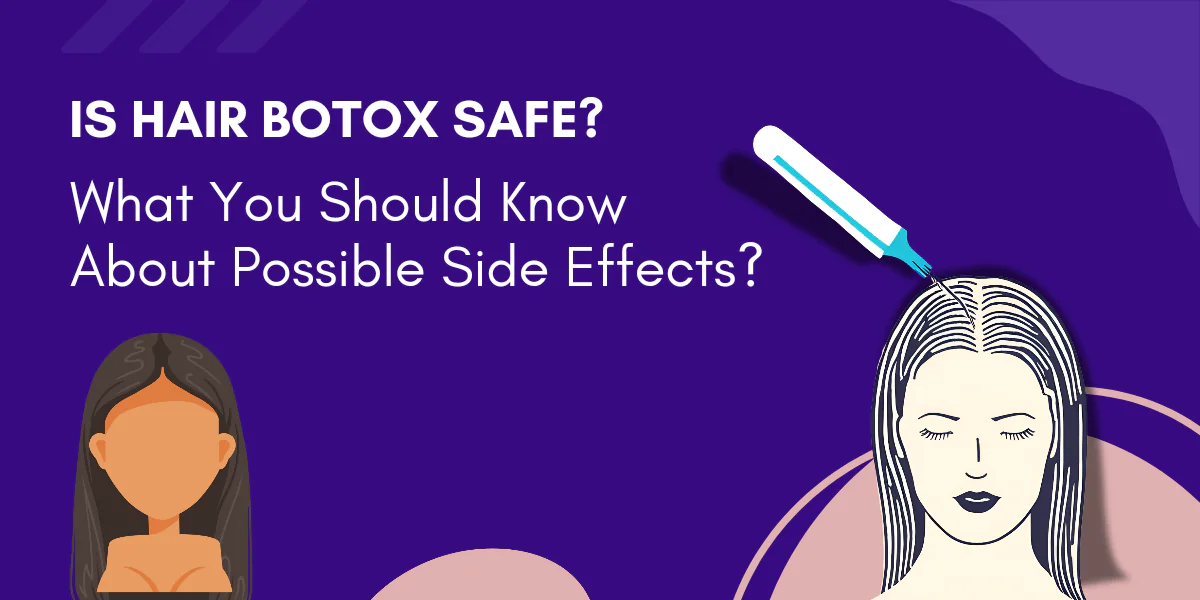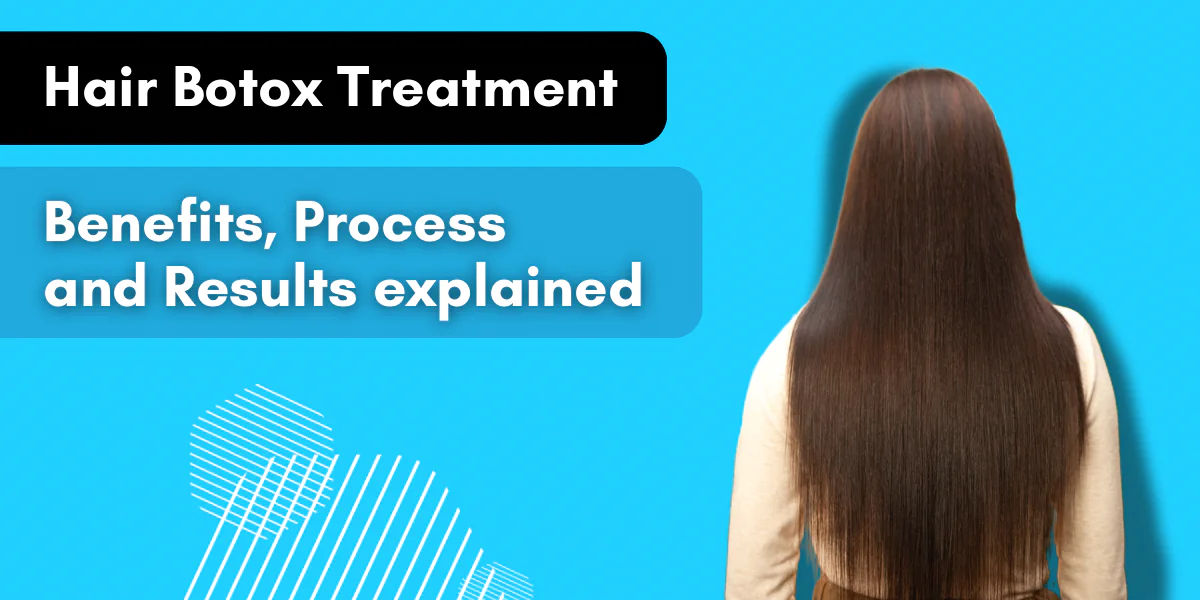Hair botox has gained popularity in India as a smoothening and deep-conditioning treatment. Many salons and influencers claim it can make hair shinier, softer, and frizz-free. But before opting for this trendy treatment, it’s essential to know if hair botox is truly safe. While it can provide benefits, it also comes with certain risks. Here’s a list of possible side effects and considerations to help you make an informed decision.
1. Scalp Sensitivity and Allergic Reactions
One of the most common issues with hair botox is scalp sensitivity. The chemicals in hair botox treatments may cause mild irritation, itching, or redness on the scalp, especially if you have sensitive skin. Some people may also develop an allergic reaction to certain ingredients, like formaldehyde, used in some hair botox products.
For those who frequently experience skin irritation or allergies, it’s advisable to consult with a dermatologist before the treatment. Requesting a patch test can also help prevent allergic reactions.
2. Breakage and Hair Thinning
Hair botox treatments may lead to hair breakage if not done correctly. The procedure involves opening hair cuticles to infuse nutrients, which can weaken the hair structure over time. Excessive or poorly applied hair botox can cause your hair to become more brittle and prone to breakage.
To avoid this, ensure you go to a reputable salon with experienced professionals. Avoid frequent treatments and give your hair time to recover between sessions.
3. Temporary Hair Loss
In some cases, hair botox treatments may lead to temporary hair loss. Hair botox works by smoothing the hair shaft and infusing it with conditioning agents. However, if the scalp becomes irritated or weakened, it may lead to shedding or hair loss. For those already dealing with hair fall, this can exacerbate the problem.
Using gentle, sulfate-free shampoos and reducing heat styling after the treatment can help minimize hair loss. If you notice significant hair shedding after the treatment, consult a dermatologist.
4. Potential Chemical Exposure
While “botox” might sound like it contains Botox injections, hair botox actually uses a blend of conditioning agents, keratin, and sometimes formaldehyde to smooth the hair. Formaldehyde can release fumes that may cause eye irritation, respiratory issues, or headaches, especially in poorly ventilated areas.
When you opt for hair botox, check with your salon if they use a formaldehyde-free formula. Requesting proper ventilation during the treatment also reduces the risk of inhaling harmful fumes.
5. Impact on Natural Hair Texture
Hair botox treatments can make hair look sleek and straight, which may be desirable. However, repeated treatments can alter your hair’s natural texture. Over time, you may notice that your natural curls or waves become looser or your hair becomes flatter.
For individuals who prefer maintaining their natural texture, using hair botox only occasionally or focusing on protein-rich hair masks may be a better option.
6. Hair Dryness and Dullness Over Time
Though hair botox aims to nourish and hydrate, it can sometimes have the opposite effect in the long run. Frequent treatments may strip your hair of natural oils, leading to dryness and a lackluster appearance. Hair that’s consistently treated with botox may become dependent on it for shine, making it look dull when not freshly treated.
To avoid dryness, limit your hair botox treatments and ensure your hair is regularly moisturized with oils, such as coconut or almond oil, which are common in Indian hair care routines.
7. Prolonged Chemical Buildup
Hair botox contains a blend of proteins, amino acids, and keratin, which can build up on the hair shaft with frequent treatments. This buildup can make hair heavy, limp, and less manageable over time. People with finer hair are especially at risk, as their hair can quickly look greasy and weighed down with excess product.
To prevent this, avoid doing hair botox treatments more than once every few months. Clarifying shampoos, which remove buildup, can also help maintain hair health between treatments.
8. Costly Maintenance
Hair botox is a relatively high-maintenance treatment, as it requires salon visits every few months to maintain results. For people who prefer a simple hair routine, this can become costly. Each session may range from ₹3000 to ₹8000, depending on the salon, location, and hair length.
Considering these costs, think about whether you want to commit to this treatment long-term or explore less expensive alternatives like deep conditioning treatments and regular hair masks.
9. Not Suitable for All Hair Types
Hair botox works best on thick, coarse, or frizzy hair, as it smooths and softens. However, it may not be as effective or even suitable for very fine or thin hair. For those with thin or fragile hair, the weight of the treatment can make the hair look flat or greasy.
If you have finer hair, opt for lightweight hydrating treatments instead. Discuss your hair type with the salon professional to ensure hair botox is the right choice for you.
10. Risk of Heat Damage
Hair botox treatments typically involve a blow-dry and flat iron to seal the treatment into the hair. This step, while essential for smoothing, can lead to heat damage if done at high temperatures or on already weakened hair. Excessive heat can cause split ends, dryness, and even more frizz over time.
To minimize heat damage, ask the salon professional to use a heat protectant on your hair before ironing. Additionally, limit heat styling outside of the salon to help maintain hair health.
Practical Tips for Safe Hair Botox Treatments
If you decide to try hair botox, consider these tips to protect your hair and scalp:
- Choose a Reputable Salon: Look for salons with experienced staff to avoid incorrect application and overuse of chemicals.
- Space Out Treatments: Limit hair botox to a few times a year to reduce the risk of buildup and long-term damage.
- Use Sulfate-Free Products: After treatment, switch to gentle shampoos that don’t strip the treatment or your hair’s natural oils.
- Avoid Frequent Heat Styling: To keep hair healthy, reduce exposure to flat irons or blow dryers outside of salon visits.
Final Thoughts
Hair botox can give you smoother, shinier hair, making it an attractive option for anyone dealing with frizz or dullness. However, it’s essential to weigh the benefits against potential risks. With proper care, occasional hair botox treatments can work well without compromising your hair’s health. But remember, your hair needs a break between treatments to stay strong and vibrant.
Ultimately, understanding how hair botox works and the side effects it may bring will help you make the best decision for your hair care routine.
Read Also: What is Hair Botox Treatment? Benefits and Process
Medical Disclaimer: This article is for informational purposes only and is not a substitute for professional medical advice. Always consult with a healthcare provider for personalized recommendations.








